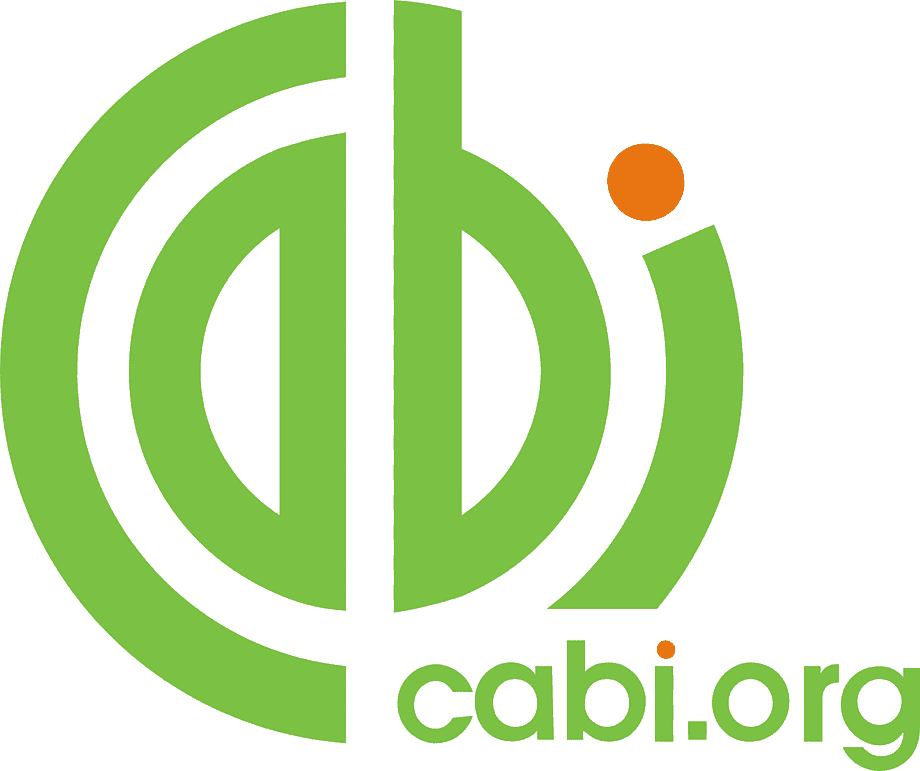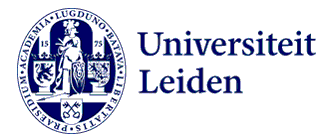Management systems of native chickens by the Indigenous and non-Indigenous Papuans: case study in West Papua, Indonesia
Sistem pengelolaan ayam lokal oleh masyarakat asli dan non asli Papua: studi kasus di Papua Barat, Indonesia
DOI:
https://doi.org/10.46549/jipvet.v12i3.324Keywords:
financial assistance, indigenous Papuan farmers, training support, Dukungan pelatihan, Peternak asli Papua, Dukungan danaAbstract
Abstrak
Sistem pengelolaan adalah faktor penting untuk meningkatkan produktivitas ayam lokal. Penelitian ini bertujuan untuk melihat sistem pengelolaan ayam buras yang dilakukan oleh peternak Masyarakat Asli Papua (IP) dan Non-Papua (NIP) di Kabupaten Manokwari Utara. Dua puluh peternak baik IP maupun NIP dipilih secara purposive sebagai responden. Metode analisis yang digunakan adalah metode deskriptif. Pengumpulan data primer dilakukan dengan wawancara dan observasi lansung di lapangan. Wawancara dilakukan dengan menggunakan kuesioner terbuka dan tertutup. Data yang terkumpul kemudian ditabulasi, dianalisis, dan kemudian dinarasikan untuk dapat menarik suatu kesimpulan. Hasil penelitian menunjukkan bahwa sistem pengelolaan ayam buras yang dilakukan oleh peternak IP dan NIP hampir sama dan hampir semua paremeter masih dalam standar normal. Namun, beberapa data produksi dan reproduksi tidak dapat diperoleh karena tidak adanya pencatatan data. Kesimpulan, sistem pengelolaan ayam buras yang dilakukan oleh peternak Papua dan Non-Papua di Kabupaten Manokwari Utara masih memerlukan pembinaan terutama dalam pencatatan data produksi dan reproduksi. Dukungan pemerintah berupa pelatihan melalui penyuluh pertanian sangat diperlukan dalam rangka meningkatkan pengetahuan peternak tentang sistem pengelolaan ayam buras. Dukungan motivasi berupa bantuan dana dari pemerintah juga diperlukan untuk mengembangkan peternakan ayam kampung untuk menunjang perekonomian para peternak khususnya di Kabupaten Manokwari Utara.
Kata kunci: Dukungan dana, Peternak asli Papua, Dukungan pelatihan
Abstract
The management system is an important factor for improving native chicken productivity. The study aimed to observe the management system of native chickens applied by Indigenous Papuan (IP) and Non-Indigenous Papuan (NIP) farmers in the North Manokwari District, West Papua, Indonesia. Twenty farmers either the IP or NIP were chosen purposively as respondents. The analysis method used was a descriptive method. The primary data were collected by interview and direct field observation. The interview was done by using an open and closed questionnaire. Data collected were then tabulated, analyzed, and then narrated to draw a conclusion. The results showed that the management systems of native chickens carried out by the IP and the NIP farmers were similar and almost all parameters were still in the normal standard. However, some production and reproduction data were not able to get due to no data recording. In conclusion, the management system of native chickens carried out by Papuans and Non-Papuans farmers in the North Manokwari District still requires guidance, especially in recording production and reproduction data. Government support in the form of training through agricultural extension agents is needed in order to improve farmers knowledge of native chickens management systems. In addition, motivational support from the government is needed to develop native chicken farms to support the farmers’ economy, especially in the North Manokwari District.
Keywords: Financial assistance; Indigenous Papuan farmers; Training support
Downloads
References
Anang BT. 2019. Effect of off-farm work on agricultural productivity: empirical evidence from northern Ghana. Agricultural Science and Technology. 11(1): 49–58. https://doi.org/10.15547/AST.2019.01.008.
Anesukanjanakul J, Banpot K and Jermsittiparsert K. 2019. Factors that influence job performance of agricultural workers. International Journal of Innovation, Creativity and Change. www.ijicc.net. 7(2): 71–86.
Aryanti F, Aji MB and Budiono N. 2014. Influence of Palm Sugar Water in the Native Chicken Performance. Jurnal Sain Veteriner. 31(2): 156–165. https://doi.org/10.22146/jsv.3800.
BPS Kabupaten Manokwari. 2017. Distrik Manokwari Utara Dalam Angka 2017. Manokwari.
BPS Kabupaten Manokwari. 2019. Kabupaten Manokwari Dalam Angka 2019. Manokwari.
BPS Provinsi Papua Barat. 2017. Provinsi Papua Barat Dalam Angka 2017.
BPS Provinsi Papua Barat. 2018. Provinsi Papua Barat Dalam Angka 2018.
Guil-Guerrero J, Ramos L, Zúñiga Paredes J, Carlosama-Yépez M, Moreno C and Ruales P. 2017. Effects of turmeric rhizome powder and curcumin in poultry production. A review. Journal of Animal and Feed Sciences. 26(4): 293–302. https://doi.org/10.22358/jafs/78511/2017.
Hartcher KM and Jones B. 2017. The welfare of layer hens in cage and cage-free housing systems. World’s Poultry Science Journal. 73(4): 767–782. https://doi.org/10.1017/S0043933917000812.
Hidayat C and Asmarasari SA. 2015. Native chicken production in Indonesia: A review. Jurnal Peternakan Indonesia (Indonesian Journal of Animal Science). 17(1): 1–11. https://doi.org/10.25077/jpi.17.1.1-11.2015.
Hu Y, Li B, Zhang Z and Wang J. 2022. Farm size and agricultural technology progress: Evidence from China. Journal of Rural Studies. 93: 417–429. https://doi.org/10.1016/j.jrurstud.2019.01.009.
Iskandar S. 2010. Usahatani Ayam Kampung. in P.P. Ketaren, S. Sopiyana, and D. Sudarman (eds) Seri Peningkatan Manfaat Sumberdaya Genetik Ternak. . Bogor. Balai Penelitian Ternak Ciawi.
Junaedi J and Husnaeni H. 2020. Relationship of hatching egg weights with egg weight loss and DOC weights of chickens from bangkok male crossbreeding with pelung chicken broodstock. Chalaza Journal of Animal Husbandry. 5(1): 35. https://doi.org/10.31327/chalaza.v5i1.1261.
Kaleka N. 2019. Beternak Ayam Kampung Petelur Dwiguna. Yogyakarta. Pustaka Baru Press.
Khan RU, Naz S, Nikousefat Z, Tufarelli V, Javdani M, Qureshi MS and Laudadio V. 2012. Potential applications of ginger (Zingiber officinale) in poultry diets. World’s Poultry Science Journal. 68(2): 245–252. https://doi.org/10.1017/S004393391200030X.
Kontecka H, Nowaczewski S and Sierszuła MM. 2012. Analysis of changes in egg quality of broiler breeders during the first reproduction period. Annals of Animal Science. 12(4): 609–620. https://doi.org/10.2478/v10220-012-0051-1.
Kotler P, Burton S, Deans K, Brown L and Armstrong G. 2013. Marketing. 9th Edition. Australia. Pearson.
Kumar M, Dahiya SP and Ratwan P. 2021. Backyard poultry farming in India: A tool for nutritional security and women empowerment. Biological Rhythm Research. 52(10): 1476–1491. https://doi.org/10.1080/09291016.2019.1628396.
Lanjouw P. 1999. Rural nonagricultural employment and poverty in Ecuador. Economic Development and Cultural Change. 48(1): 91–122. https://doi.org/10.1086/452448.
Luanmase CM, Nurtini S and Haryadi FT. 2011. Analisis motivasi beternak sapi potong bagi peternak lokal dan transmigran serta pengaruhnya terhadap pendapatan di Kecamatan Kairatu, Kabupaten Seram Bagian Barat. Buletin Peternakan. 35(2): 113–123. https://doi.org/10.21059/buletinpeternak.v35i2.598.
Luthfia AR. 2013. Menilik urgensi desa di era otonomi daerah. Journal of Rural and Development. 4(2).
Magothe TM, Okeno TO, Muhuyi WB and Kahi AK. 2012. Indigenous chicken production in Kenya: I. Current status. World’s Poultry Science Journal. 68(1): 119–132. https://doi.org/10.1017/S0043933912000128.
Maican S Ștefania, Muntean AC, Paștiu CA, Stępień S, Polcyn J, Dobra IB, Dârja M and Moisă CO. 2021. Motivational factors, job satisfaction, and economic performance in romanian small farms. Sustainability. 13(11): 1–23. https://doi.org/10.3390/su13115832.
Mathiu EM, Ndirangu SN and Mwangi SC. 2021. Production of indigenous poultry among smallholder farmers in Tigania West Meru County, Kenya. African Journal of Agricultural Research. 17(5): 705–713. https://doi.org/10.5897/AJAR2021.15465.
Melesse A. 2014. Significance of scavenging chicken production in the rural community of Africa for enhanced food security. World’s Poultry Science Journal. 70(3): 593–606. https://doi.org/10.1017/S0043933914000646.
Muladno. 2008. Local chicken genetic resources and production systems in Indonesia. GCP/RAS/228/GER Working Paper N0. 6. .
Muladno M and Thieme O. 2009. Production systems and poultry genetic resources utilized by small producers in areas of West Java and Central Java, Indonesia. GCP/RAS/228/GER Working Paper No. 12. .
Pal M. 2017. The Role of Minerals and Vitamins in Poultry Production. Agriculture World. 68–71.
Paltasingh KR and Goyari P. 2018. Impact of farmer education on farm productivity under varying technologies: case of paddy growers in India. Agricultural and Food Economics. 6(1): 1–19. https://doi.org/10.1186/S40100-018-0101-9/TABLES/4.
Pathak PK and Nath BG. 2013. JWPR Rural Poultry Farming with Improved Breed of Backyard Chicken. J. World’s Poult. Res. 3(1): 24–27.
Pramudyati YS. 2009. Beternak Ayam Buras. Palembang. JT2 Merang Reedpilot Project bekerjasama dengan Balai Pengkajian Teknologi Pertanian Sumatra Selatan.
Seng K. 2015. The Effects of nonfarm activities on farm households’ food consumption in rural Cambodia. Development Studies Research. 2(1): 77–89. https://doi.org/10.1080/21665095.2015.1098554.
Suprayogi WPS, Riptanti EW and Widyawati SD. 2018. Budidaya ayam kampung intensif melalui program pengembangan usaha inovasi kampus. INOTEKS : Jurnal Inovasi Ilmu Pengetahuan, Teknologi, dan Seni. 22(1): 18–27. https://doi.org/10.21831/INO.V22I1.18917.
Yemane N, Tamir B and Belihu K. 2014. Characterization of village chicken production performance under scavenging system in Halaba district of southern Ethiopia. Ethiopian Veterinary Journal. 17(1): 68–80. https://doi.org/10.4314/evj.v17i1.6.
Downloads
Published
How to Cite
Issue
Section
License
Copyright (c) 2022 Sri Hartini, Andoyo, Theofilus

This work is licensed under a Creative Commons Attribution-NonCommercial-ShareAlike 4.0 International License.
License and Copyright Agreement
In submitting the manuscript to the journal, the authors certify that:
- They are authorized by their co-authors to enter into these arrangements.
- The work described has not been formally published before, except in the form of an abstract or as part of a published lecture, review, thesis, or overlay journal. Please also carefully read Jurnal Ilmu Peternakan dan Veteriner Tropis (Journal of Tropical Animal and Veterinary Science) Posting Your Article Policy at https://journal.fapetunipa.ac.id/index.php/JIPVET/publicationethics
- That it is not under consideration for publication elsewhere,
- That its publication has been approved by all the author(s) and by the responsible authorities “tacitly or explicitly“ of the institutes where the work has been carried out.
- They secure the right to reproduce any material that has already been published or copyrighted elsewhere.
- They agree to the following license and copyright agreement.
Copyright
Authors who publish with Jurnal Ilmu Peternakan dan Veteriner Tropis (Journal of Tropical Animal and Veterinary Science) agree to the following terms:
- Authors retain copyright and grant the journal right of first publication with the work simultaneously licensed under a Creative Commons Attribution License (CC BY-NC-SA 4.0) that allows others to share the work with an acknowledgment of the work's authorship and initial publication in this journal.
- Authors are able to enter into separate, additional contractual arrangements for the non-exclusive distribution of the journal's published version of the work (e.g., post it to an institutional repository or publish it in a book), with an acknowledgment of its initial publication in this journal.
- Authors are permitted and encouraged to post their work online (e.g., in institutional repositories or on their website) prior to and during the submission process, as it can lead to productive exchanges, as well as earlier and greater citation of published work.

This work is licensed under a Creative Commons Attribution-NonCommercial-ShareAlike 4.0 International License.

























.png)
